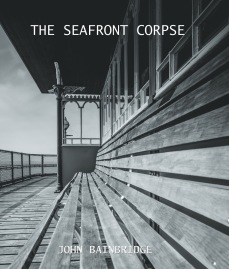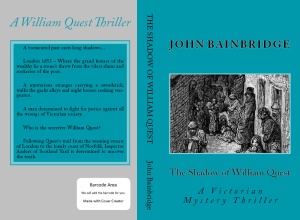Anne wrote this for our crime writing blog http://www.gaslightcrime.wordpress.com and we thought followers of this writing blog might find it interesting, John.
Our latest period crime novel The Seafront Corpse, is the first in a projected series set in the early 1930s. We like the idea of spending time in the pre-war England of the Golden Age detective fiction we enjoy so much. Trying our hand at contemporary crime has never appealed – and I’m full of admiration for writers who deliver a compelling mystery while knowing their way around modern police procedure and forensics.
Rather than basing our detectives in London and sending them around the country, we fancied writing about a provincial town. Somewhere large enough to have plots for murders yet with a medium-sized community where people know the more prominent members, at least by reputation. We settled on a Sussex seaside resort, within reach of a day-trip to London.
The Channel resorts of south-east England were at the start of their heyday between the wars. The coastal towns of Sussex and Kent were experiencing a building boom both in housing and distinctive public buildings. Lidos, shopping arcades, ice cream parlours and pavilions were appearing. Victorian piers, theatres, town and concert halls were being given an art deco or moderne facelift. Aerodromes and motor-car showrooms were being built and of course, every large town in England was getting at least one cinema.
Some of these stylish buildings can still be enjoyed today. In Sussex, Worthing has one of the finest moderne piers in England. Opened in 1935, it has featured in an episode of Poirot. Further along the coast, the De La Warr Pavilion in Bexhill-On-Sea was built the same year. One of the most important moderne buildings in England, it is Grade 1 listed and was used in Foyle’s War. Sadly, many fine examples were bulldozed in recent decades before town councils realised what important, historic townscapes they had in their care.
Our initial thought was to use Brighton as a setting. We changed our minds as Brighton’s real-life crime in the 30s was on the hard-boiled side, as depicted in Graham Greene’s Brighton Rock. So we created our own Tennysham-On-Sea, influenced by but not based upon any real town. We wanted to describe a genteel resort with repertory players and beach photographers, the sort of place where Miss Marple might stay for a few days. It’s been fun mapping out our fictional town and dreaming up more features for the next book.
Tennysham isn’t meant to be too cosy. We wanted to reflect the seedy back streets, something that hasn’t changed as much as you might think. (I’ve lived in a few resorts along the Channel and rented flats that would fit well in a Patrick Hamilton novel). So Tennysham has its shabby boarding-houses, the bus-depot and laundry, gas-works and coal-yard as well as its chalk cliffs and smart sea-front.
Our detective, Inspector Eddy Chance, is a local who’s been transferred away from the town for some years. Newly promoted as head of the small C.I.D. department, he’s glad to be back home and working with his old pal and former mentor, Sergeant Wilf Bishop.
We didn’t want to write about the classic country house-party setting with an upper-class amateur sleuth, much as we enjoy reading them. Our interest is in working detectives who investigate a wide variety of characters, more Wexford than Wimsey, though we love them both.
It’s been a pleasure to attempt to create the atmosphere of the 30s, a world where the detectives wear trilbys and pipe smoke curls over the typewriter. Where they stop off at phone boxes and press button B, the Chief Constable is a retired colonel and no one’s heard of DNA.
To get the feel of the language, you can’t do better than immerse yourself in the crime fiction of the time before you start writing. Their slang for instance – which varied according to class – as well as all kinds of popular expressions and writing style. Novels of the period are full of fascinating detail such as typical meals and clothing with names of fabrics and colours we no longer say. (I won’t be using ‘nigger’ brown, though it must be remembered it was polite usage at the time).
It’s important to us that our 30s atmosphere feels as authentic as possible but there’s a balance to be struck. Novels where characters ‘ejaculate’ expressions such as ‘what ho’ or ‘top hole, old thing,’ read like a spoof. Bertie Wooster could get away with it – or even Tommy Beresford – but today they could make the reader laugh where you don’t intend it.
We’ve started our series in 1931, partly because it’s a very different time from the 30s of John’s thriller, Balmoral Kill. Set only a few years later in 1937 the world has changed and everything is overshadowed by the coming war.
This time we’re interested to look at how people were, thirteen years after the Great War. In the 1920s the prevailing mood was to try to forget the horrors and look to the future but of course that isn’t always easy. The scars remained, mental and physical. We’ve tried to reflect this in our characters.
These are my favourite reads for research, getting in the mood and enormous pleasure. In no particular order:
Agatha Christie, Ngaio Marsh, Dorothy L. Sayers, Margery Allingham, E.F Benson’s Lucia novels, Patrick Hamilton and Richmal Crompton’s William novels.
Non-fiction: Orwell’s The Road To Wigan Pier, J.B Priestley’s English Journey and Martin Pugh’s We Danced All Night (a superb social history of Britain between the wars).
To order our Inspector Chance novel The Seafront Corpse, just click on the link below:
http://www.amazon.co.uk/Seafront-Corpse-Inspector-Chance-Mystery-ebook/dp/B019N7QQHQ/ref=sr_1_3?s=digital-text&ie=UTF8&qid=1460037993&sr=1-3&keywords=john+bainbridge


 I was pleasantly surprised when the two books came out. They’ve sold moderately well and have garnered some kindly reviews. Since then we’ve put out a couple more works of non-fiction “Easy British Bakes and Cakes”, and “Wayfarer’s Dole”, an autobiographical account of some of my early days walking in the British countryside.
I was pleasantly surprised when the two books came out. They’ve sold moderately well and have garnered some kindly reviews. Since then we’ve put out a couple more works of non-fiction “Easy British Bakes and Cakes”, and “Wayfarer’s Dole”, an autobiographical account of some of my early days walking in the British countryside.



